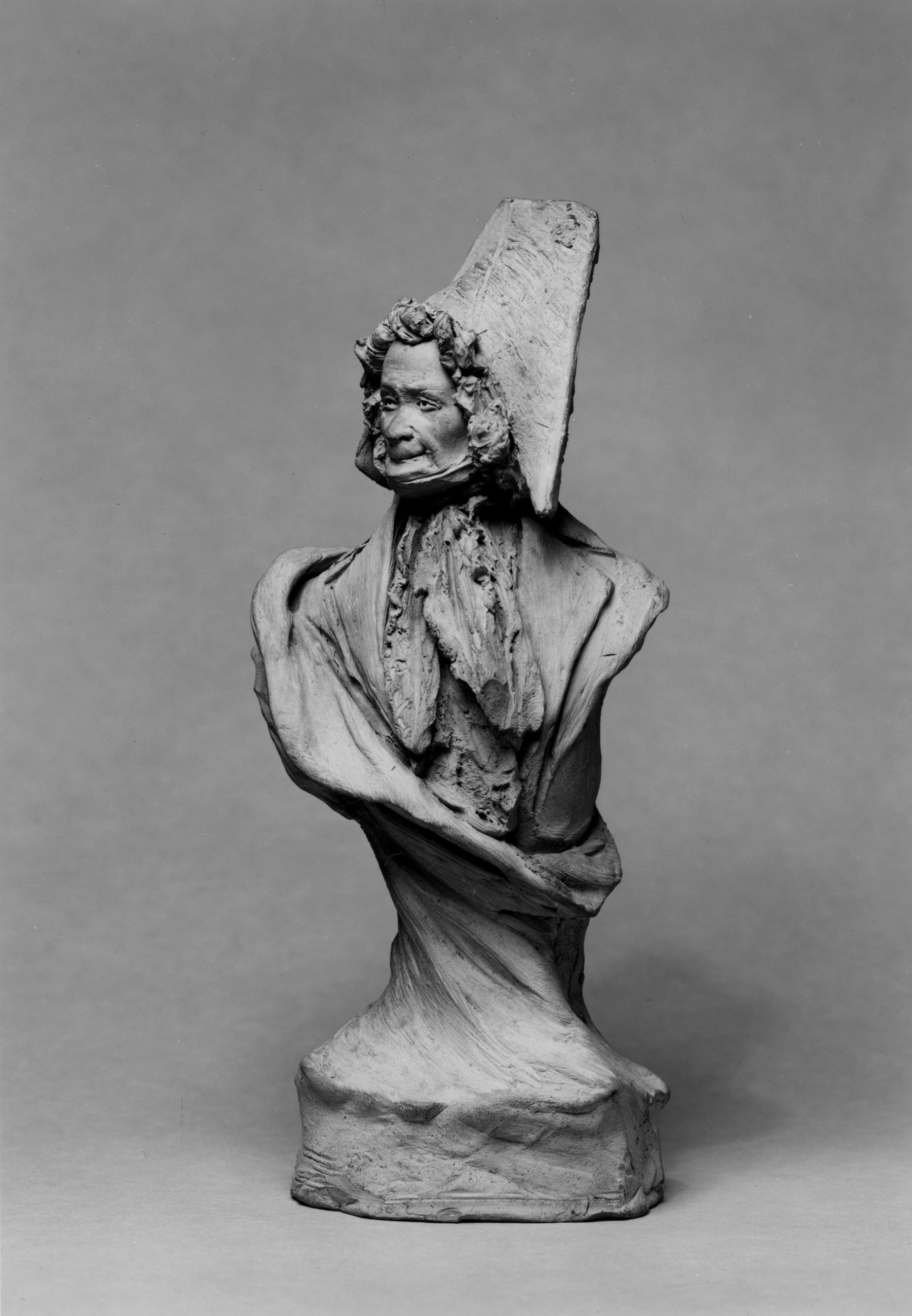Bust of a Man in a Hat
(18th and 19th Centuries )
This small terracotta (clay) bust depicts a man in large bicorne (two cornered) or cocked hat, a high collar, and flowing cravat. Beginning around 1730, terracotta became a popular medium for sculptures in France. Collectors appreciated that terracotta pieces could have the quality of a sketch, equivalent to a drawing made by a painter in finalizing his work, where the artist’s process was made visible. This bust embodies these qualities and careful looking reveals tool marks and even fingerprints in the surface.
Provenance
Provenance (from the French provenir, 'to come from/forth') is the chronology of the ownership, custody, or location of a historical object. Learn more about provenance at the Walters.
Walters Art Museum, December 1968, by purchase.
Geographies
France (Place of Origin)
Measurements
Overall: H: 8 9/16 × W: 3 1/4 × D: 2 7/16 in. (21.8 × 8.3 × 6.2 cm)
Credit Line
Museum purchase with funds provided by the S. & A.P. Fund, 1968
Location in Museum
Accession Number
In libraries, galleries, museums, and archives, an accession number is a unique identifier assigned to each object in the collection.
In libraries, galleries, museums, and archives, an accession number is a unique identifier assigned to each object in the collection.
27.573


